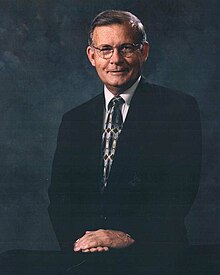
The Rogers Commission Report was written by a Presidential Commission charged with investigating the Space Shuttle Challenger disaster during its 10th mission, STS-51-L. The report, released and submitted to President Ronald Reagan on June 9, 1986, both determined the cause of the disaster that took place 73 seconds after liftoff, and urged NASA to improve and install new safety features on the shuttles and in its organizational handling of future missions.

Charles David "Charlie" Walker is an American engineer and astronaut who flew on three Space Shuttle missions in 1984 and 1985 as a Payload Specialist for the McDonnell Douglas Corporation.

James Craig Adamson is a former NASA astronaut and retired Colonel of the United States Army. He is married with 3 children. James Adamson flew on two missions, STS-28 and STS-43, and completed 263 orbits and 334 hours in space. After retiring from NASA, he was recruited by Allied Signal where he retired in 2001. Adamson has logged over 3,000 hours in over 30 different types of helicopters and airplanes.

Roy Dubard Bridges Jr. is an American pilot, engineer, retired United States Air Force officer, test pilot, former NASA astronaut and the former director of NASA's John F. Kennedy Space Center and Langley Research Center. As a command pilot, he has over 4,460 flying hours, and is a decorated veteran of 262 combat missions during the Vietnam War. He retired as a U.S. Air Force major general, last serving as the Director of Requirements, Headquarters Air Force Materiel Command, Wright-Patterson Air Force Base, Ohio, from June 1993 until his retirement. He is married with two adult children.

Michael James "Mike" McCulley, , is a retired American naval officer and aviator, test pilot, metallurgical engineer, and former NASA astronaut, and was the first submariner in space. He served as pilot on STS-34 Atlantis mission that among other things deployed the Galileo spacecraft on its journey toward Jupiter.

Charles Joseph Precourt is a retired NASA astronaut. His career in flight began at an early age, and spans his entire lifetime. He served in the US Air Force, piloted numerous jet aircraft, and piloted and commanded the Space Shuttle. Notably, he piloted or commanded several missions which involved docking with the Russian Mir space station and was heavily involved in Russian/US Space relations as well as the International Space Station collaboration. He also served as Chief of the Astronaut Office from 1998 to 2002. He retired from the USAF with the rank of colonel.
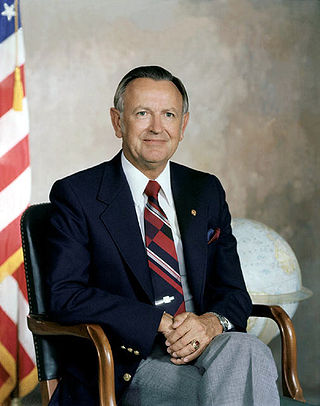
Christopher Columbus Kraft Jr. was an American aerospace and NASA engineer who was instrumental in establishing the agency's Mission Control Center and shaping its organization and culture. His protégé Glynn Lunney said in 1998: "the Control Center today ... is a reflection of Chris Kraft".
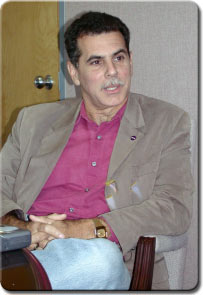
Miguel Rodríguez is the Chief of the Integration Office of the Cape Canaveral Spaceport Management Office.

Jay Henry Greene was a NASA engineer. Between 2000 and 2004, he served as Chief Engineer at Johnson Space Center, where his role consisted primarily of advising the Center Director. He worked as a FIDO flight controller during the Apollo Program and a flight director from 1982 to 1986, and as ascent flight director during the 1986 Space Shuttle Challenger disaster.

Christopher Joseph "Gus" Loria is a retired United States Marine Corps Colonel and a medically retired NASA astronaut. He was originally scheduled to fly on STS-113 as pilot; however, he was grounded from spaceflight due to a severe back injury.
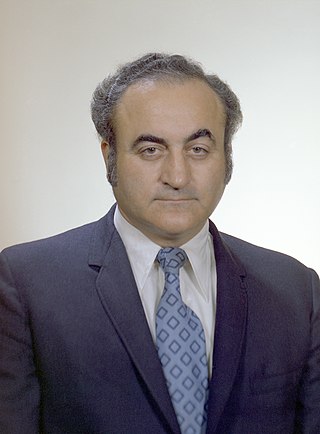
Rocco Anthony Petrone was an American mechanical engineer, U.S. Army officer and NASA official. He served as director of launch operations at NASA's Kennedy Space Center (KSC) from 1966 to 1969, as Apollo program director at NASA Headquarters from 1969 to 1973, as third director of NASA's Marshall Space Flight Center from 1973 to 1974, and as NASA Associate Administrator from 1974 until his retirement from NASA in 1975.
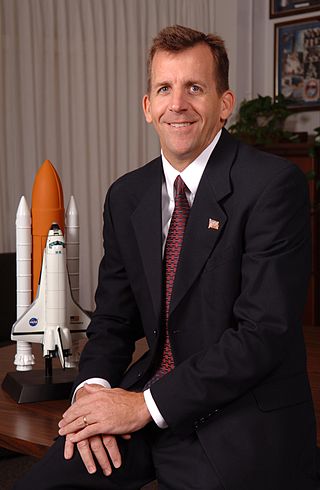
LeRoy Edward Cain is an American aerospace engineer who worked for NASA as a flight director, launch integration manager and deputy manager of the Space Shuttle Program. Cain may be best known to the public from footage and documentaries showing his work as the entry flight director for STS-107, the mission that ended in the catastrophic disintegration of Space Shuttle Columbia, February 1, 2003. Cain issued the famous "Lock the doors" command, initiating contingency procedures in mission control for the first time since the Space Shuttle Challenger disaster 17 years earlier.

Fernando "Frank" Caldeiro was an Argentine-born American scientist and NASA astronaut.
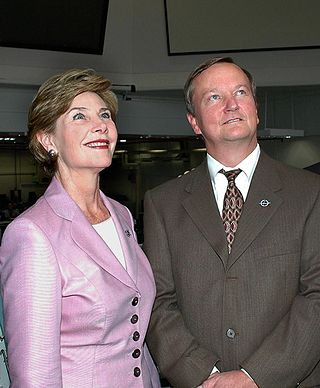
Michael D. Leinbach is an aerospace engineer who was the former Shuttle Launch Director at NASA's John F. Kennedy Space Center (KSC), Florida. He was responsible for activities in the overall shuttle launch countdown, including planning, policy, and execution.

N. Wayne Hale Jr. is a former NASA engineer. Previously a flight director and Space Shuttle program manager, Hale served as NASA's Deputy Associate Administrator for Strategic Partnerships prior to his retirement on July 31, 2010.

Gerald D. Griffin is an American aeronautical engineer and former NASA official, who served as a flight director during the Apollo program and director of Johnson Space Center, succeeding Chris Kraft in 1982.
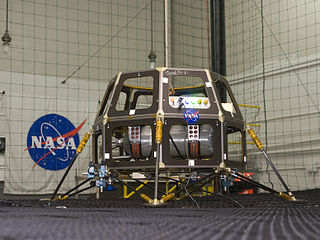
On 6 December 2007, Odyssey Moon was the first team to register for the Google Lunar X Prize competition, an event that hopes to rekindle the efforts of humans to return to the Moon. The competition is referred to as "Moon 2.0" and is composed of other private organizations like Odyssey Moon Limited, the commercial lunar enterprise that makes up this team. Each team will be competing for a $20 million first prize, a $5 million second prize, and additional $5 million in (potential) bonuses.

Lee R. Scherer was an American aeronautical engineer and director of NASA's John F. Kennedy Space Center (KSC) from January 19, 1975 to September 2, 1979. Prior to his appointment as KSC director, Scherer was director of NASA's Flight Research Center, Edwards, California, responsible for the conduct of advanced aeronautical flight research.

William W. (Bill) Parsons is an American engineer. He served as the ninth director of NASA's John F. Kennedy Space Center, and as the fifth and seventh director of NASA's John C. Stennis Space Center.

Charlie Blackwell-Thompson is an American engineer. Blackwell-Thompson is the launch director for NASA's Exploration Ground Systems Program, based at NASA's John F. Kennedy Space Center (KSC). She oversaw the countdown and liftoff of NASA's Space Launch System (SLS) rocket and Orion spacecraft during its first flight test, called Artemis 1.
